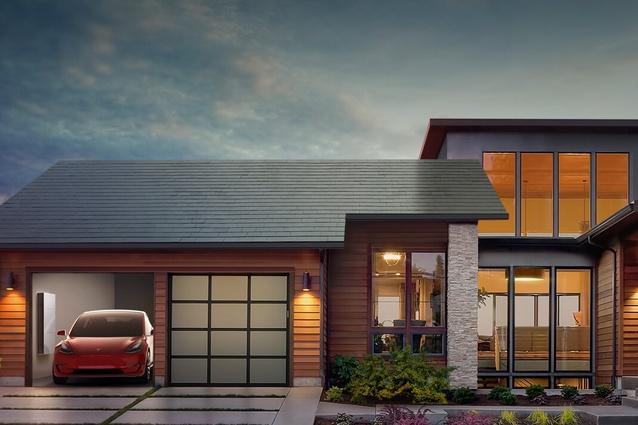SolarCity and Tesla Motors, both American based businesses, recently launched a new advanced technology that will enable households to use their rooftop solar tiles to capture solar energy.
The textured roofing tiles will be made of solar cells, thereby providing a more viable and an aesthetically pleasing solar power option to customers who might have been discouraged by the idea of placing big solar panels on their rooftops.
SolarCity chairman and Tesla Motors’ CEO Elon Musk made the announcement which coincided with the launch of Powerwall 2.0, the newest version of the wall-mounted storage battery.
Musk stated that their main objective was to have solar enhanced roofs that “look better than normal roofs, generate electricity, last longer, have better insulation and have an install cost that is less than a normal roof plus the cost of electricity.”
The latest Powerwall contains twice as much power as Powerwall 1, with a 14-kilowatt hour energy storage capacity and 7-kilowatt power output.
The Tesla Powerwall is designed to store solar energy to be utilized in future when the solar panels are ineffective or can’t be used directly for lack of adequate sunlight, like during the evenings.
Musk added that the Powerwall 2.0 can efficiently power a four-bedroom house with a fridge, lights and sockets for a whole day and if the house has installed a rooftop solar, it can be powered indefinitely.
According to a past article by The Conversation, one of the obstacles hindering Australians from adopting solar energy is the requirement for upfront costs. In the said article, author Kylie Catchpole noted that a household takes between 5 and 10 years to fully pay back the entire cost of installing the solar panel, as compared to a 25-year lifetime guaranteed system.
The announcement from the two companies comes at a time when several solar feed-in tariffs in Australia are set for closure at the fall of 2016. These schemes involve paying households for the surplus electricity exported to the main grid. The FITs vary from state to state. South Australia for instance has already closed its tariff while Victoria and New South Wales are expected to expire at the end of this year.
Participants in South Australia’s Group 4 will experience the cut first. This will include households with homes that have installed solar energy systems that qualified from 1 October 2011 to 30 September 2013. Starting 30 September 2016, payments for Group 4 participants were slashed from 16 cents per kilowatt hour to 6.8 cents.
In New South Wales, beginning 31 December 2016, participants who registered with the Solar Bonus Scheme before May 2011 will see their payments reduced from the current 60 cents or 20 cents per kilowatt hour to a lower 4.7-8 cents.
On the other end, the Victorian Transnational Feed In Tariff (TFIT) replaced the Premium Feed-in Tariff (PFIT) in 2011 and expired in December 2012. At the moment, TFIT pays 25 cents per kilowatt hour to participants although this is expected to change from 31 December 2016 as the current rate will drop to a meager 5 cents.
In July this year, a town in Melbourne, YarraBend to be precise, was predictably poised to become the world’s first Tesla suburb having installed Tesla Powerwall technology in households.
Images Courtesy of Tesla



